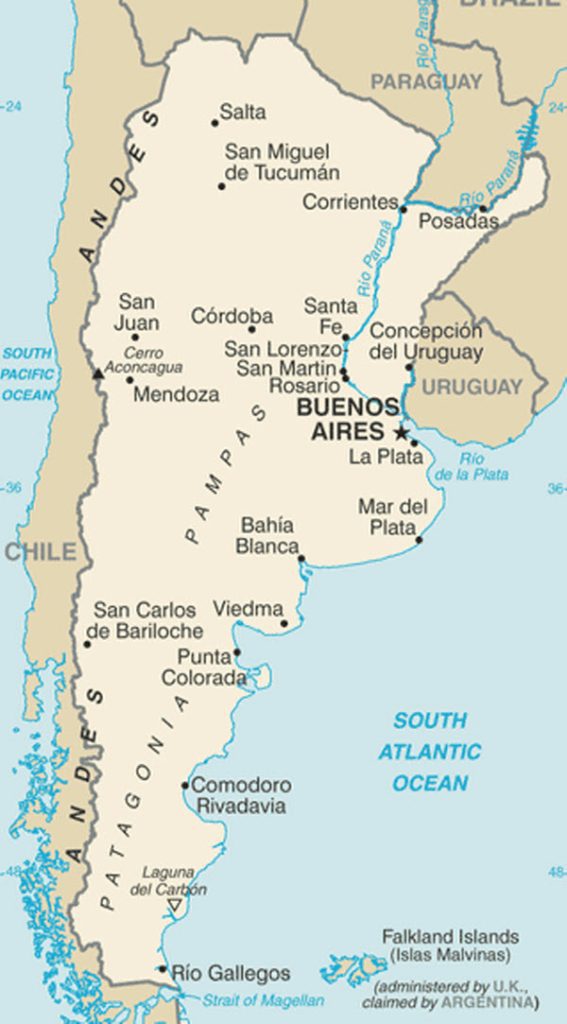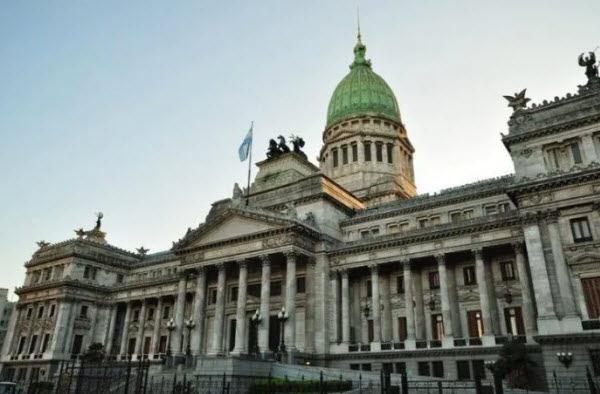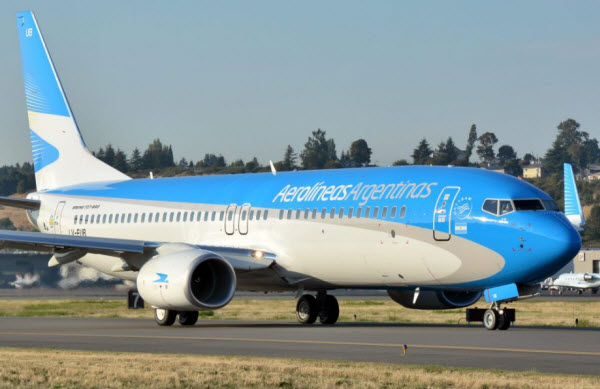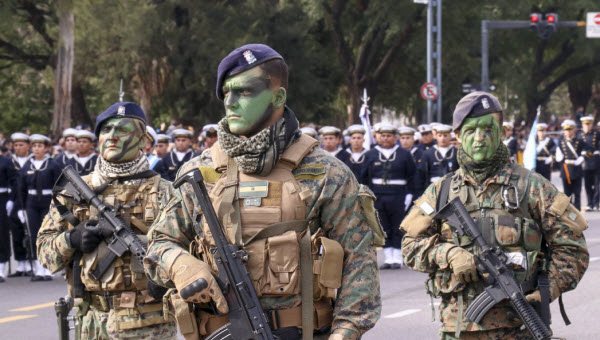Argentina is a country located in South America, consisting of 23 provinces and an autonomous city, Buenos Aires. It is one of the largest and most influential countries in the region, known for its rich culture and diverse geography.
Geography

- Location: South America
- Coordinates: Approximately 34.0000° S, 64.0000° W
- Area: About 2,780,400 square kilometers, making it the second-largest country in South America.
Borders:
- North: Bolivia and Paraguay
- South: Chile and the Southern Atlantic Ocean
- East: Uruguay, Brazil, and the Atlantic Ocean
- West: Chile
Climate:
- Varies from subtropical in the north to polar in the far south, with temperate zones in central Argentina.
Topography:
- Includes the Andes Mountains to the west, the Pampas plains, and the fertile grasslands, as well as the semi-arid Patagonia region.
Elevation:
- The highest peak is Aconcagua, the tallest mountain in the Americas, at an elevation of 6,959 meters.
Natural Resources:
- Includes oil, natural gas, minerals (such as copper and lithium), fertile land, and freshwater.
Land Use:
- 54% agriculture, 20% forests, and 26% other uses.
Population Distribution:
- Most of the population is concentrated in urban areas, particularly in Buenos Aires, Cordoba, and Rosario.
Population and Society

- Population: Approximately 46 million (2024 estimate).
- Ethnic Groups: Predominantly of European descent, mainly Spanish and Italian, with smaller indigenous and mixed populations.
- Languages: Spanish is the official language, with regional languages spoken by indigenous communities.
- Religions: Roman Catholicism is the dominant religion (about 62%), with growing Protestant, Muslim, and Jewish communities.
- Age Structure: Diverse age range, with a growing elderly population.
- Population Growth Rate: Approximately 0.9% annually.
Country

- Country Name: Argentine Republic
- Common Name: Argentina
- Reason for Name: From the Latin word “argentum,” meaning silver, reflecting the rich mineral deposits in the region.
- Type of Government: Federal Democratic Republic
- Capital: Buenos Aires
- Reason for Naming Capital: Buenos Aires means “Good Airs,” originally referencing favorable winds for navigation.
- Local Time: GMT-3
- Daylight Saving Time: Not observed.
- Administrative Divisions: 23 provinces and 1 autonomous city (Buenos Aires).
- Independence: Gained independence from Spain on July 9, 1816.
- Citizenship Acquisition: Through birth in Argentina, legal residency, or naturalization.
- Legal System: Civil law system based on the Argentine Constitution.
- Executive Branch: The President is both the head of state and government.
- Legislative Branch: The National Congress consists of the Senate and the Chamber of Deputies.
- Judicial Branch: The Supreme Court and other federal courts.
- Political Parties: Major parties include the Justicialist Party (Peronist) and the Radical Civic Union.
- Flag Description: Three horizontal bands of light blue, white, and light blue, with a golden sun in the center.
- Country Code: ARG
Economy
- GDP: Approximately $510 billion USD.
- Agricultural and Animal Products: Includes soybeans, wheat, corn, beef, and wine.
- Industries: Includes food processing, motor vehicles, textiles, chemicals, and steel.
- Budget: Frequent fiscal deficits with rising external debt.
- Exports: Soybeans, meat, vehicles, and wine.
- Imports: Machinery, chemicals, petroleum, and electronics.
- Foreign Reserves: Approximately $28 billion USD.
- External Debt: About $100 billion USD.
- Local Currency: Argentine Peso (ARS).
Communications
- Landlines: About 9 million lines.
- Mobile Lines: About 60 million lines.
- Country Code: +54
- Broadcast Media: Includes national television and radio stations, with extensive coverage.
- Internet Code: .ar
- Internet Users: Approximately 40 million people.
Transportation

- National Air Transport System: Includes several international and regional airports.
- Airports: Over 60 airports.
- Helipads: Present in major cities.
- Pipelines: Extensive network for oil and gas transportation.
- Railroads: Approximately 35,000 kilometers of railroads.
- Road Network: Over 200,000 kilometers of roads, with a growing highway system.
- Ports: Major ports include Buenos Aires, Rosario, and Bahia Blanca.
Military

- Military Composition: Includes the Army, Navy, and Air Force.
- Military Spending: Approximately $6 billion USD annually.
- Military and Security Personnel: About 80,000 active duty members.
- Military Equipment: Includes tanks, aircraft, and naval vessels.
- Military Service Age: Ranges from 18 to 24 years.
